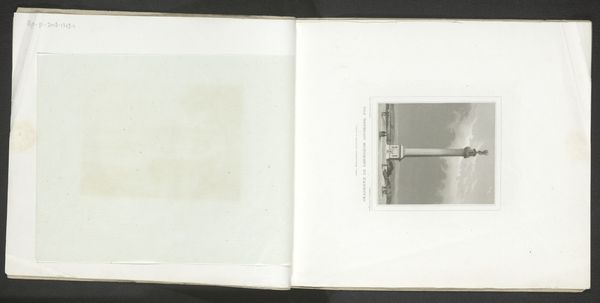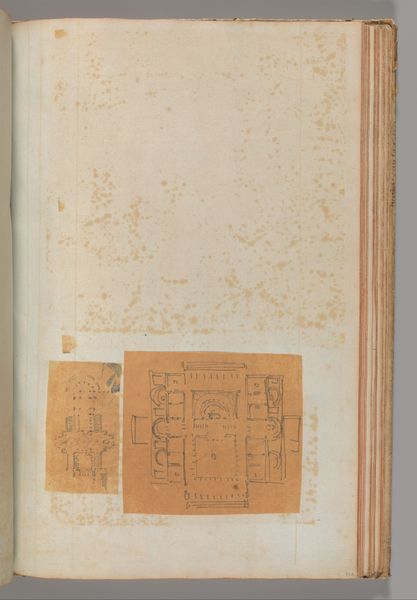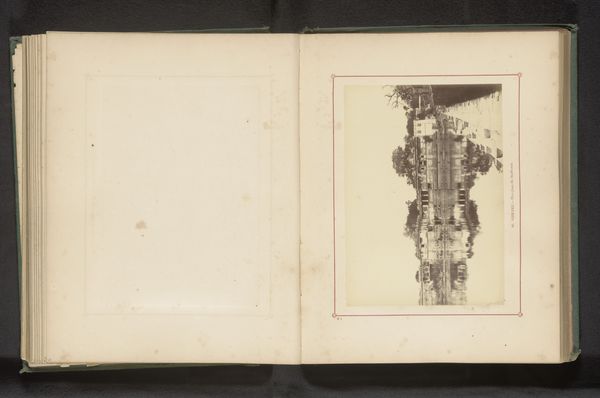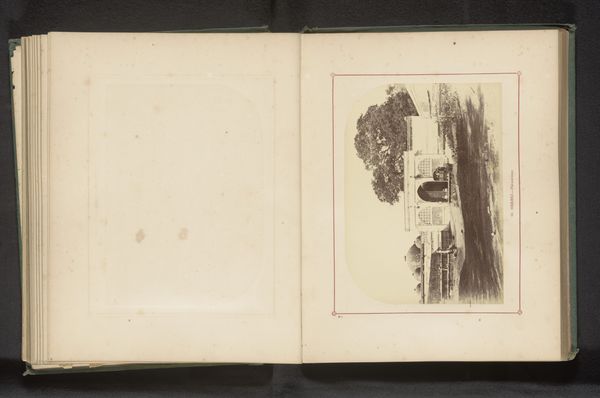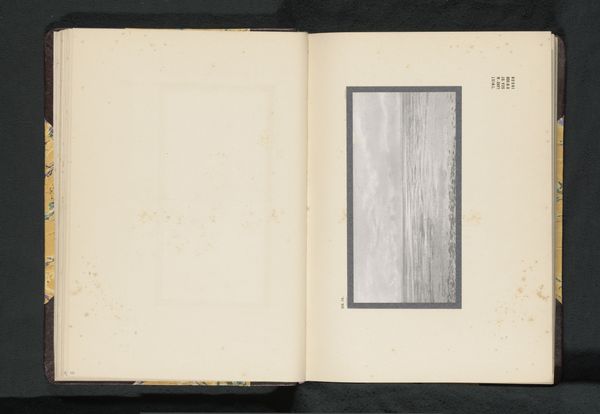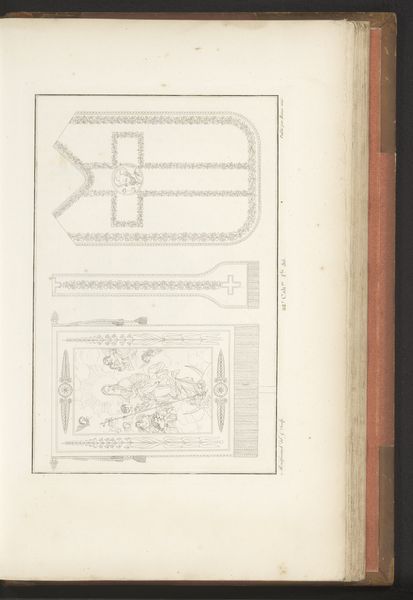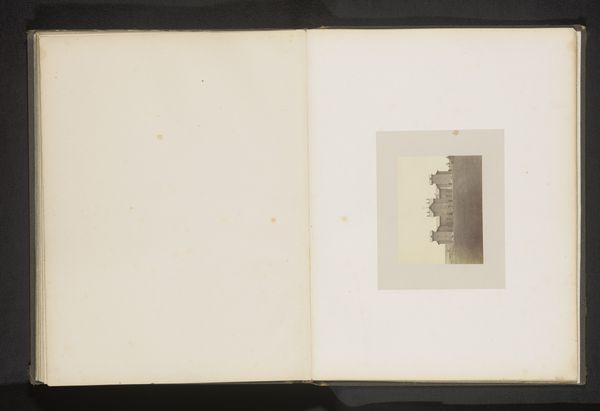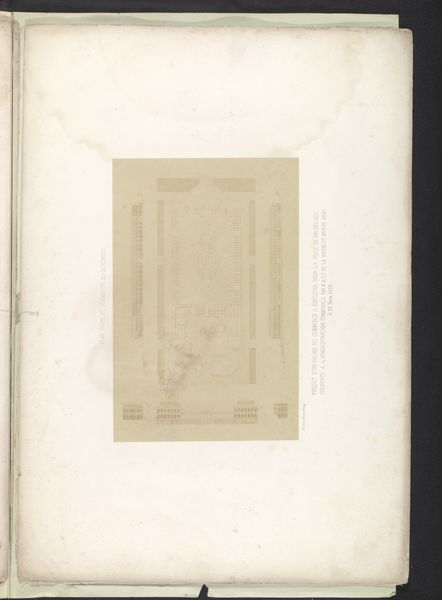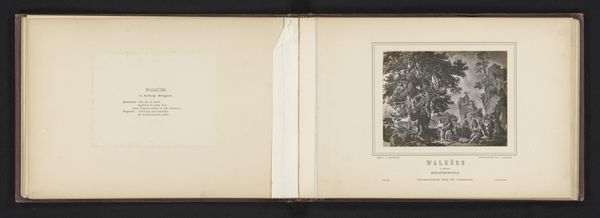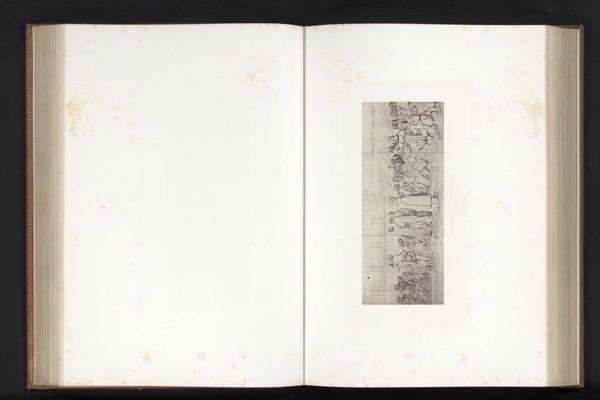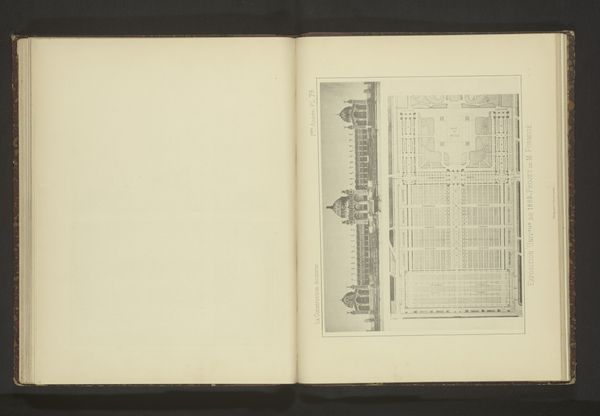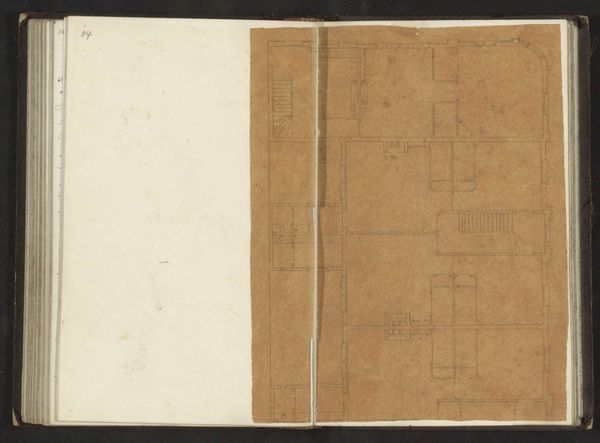
Fotoreproductie van een plattegrond van het trappenhuis van het Neues Museum in Berlijn met wanschilderingen door Wilhelm von Kaulbach before 1870
0:00
0:00
Dimensions: height 242 mm, width 185 mm
Copyright: Rijks Museum: Open Domain
Curator: This photogravure presents a floor plan dating back to before 1870. It depicts the staircase of the Neues Museum in Berlin and some rather interesting mural work attributed to Wilhelm von Kaulbach. Editor: Immediately striking is the stark contrast; the right side is all geometrical precision, etched in delicate lines, while the adjacent page shows the aged texture of the paper, stained with the passage of time. Curator: The crisp lines definitely highlight the Neoclassical design of the museum's architecture. What I find particularly compelling here is the process of reproduction itself. This isn't just a drawing, but a photogravure, which speaks volumes about the technological advancements and the social value placed on documenting architectural spaces at that time. Think about the labor involved in both the design of the building and the crafting of this print. Editor: Indeed! This plan provides us a tangible insight into how the museum itself functioned as a political statement in Berlin’s urban fabric, reinforcing the prominence of institutions like the Neues Museum and shaping public perceptions of space, art, and knowledge. How these types of illustrations influenced museum attendance! Curator: Precisely. The materials - the paper, the ink, the photographic process - are as important as the imagery itself. Consider the cost of production: Who had access to these prints? How did that shape the reception of the museum? Editor: Absolutely. Beyond just a guide to navigate the space, reproductions like these shaped the museum’s narrative. Who paid for these prints? How was it distributed? That could tell us about class access and popular tastes of the moment. Curator: And the contrast is fascinating. The pristine lines representing the architecture juxtaposed against Kaulbach's... 'wanschilderingen’ suggests a dialogue between design and ornamentation, between utility and artistic expression. Editor: It brings a layered depth to the artifact, prompting considerations on the building's history and function. I wonder what future visitors looking at similar materials will feel and how society evolves within museums. Curator: Reflecting on this detailed reproduction really heightens my understanding of the processes required to record and disseminate these architectural spaces in the past. It’s like holding a moment in history in your hands. Editor: Agreed. And for me, it underscores the power dynamics that shaped, and continue to shape, our interaction with museum spaces, revealing narratives etched in ink and paper.
Comments
No comments
Be the first to comment and join the conversation on the ultimate creative platform.
